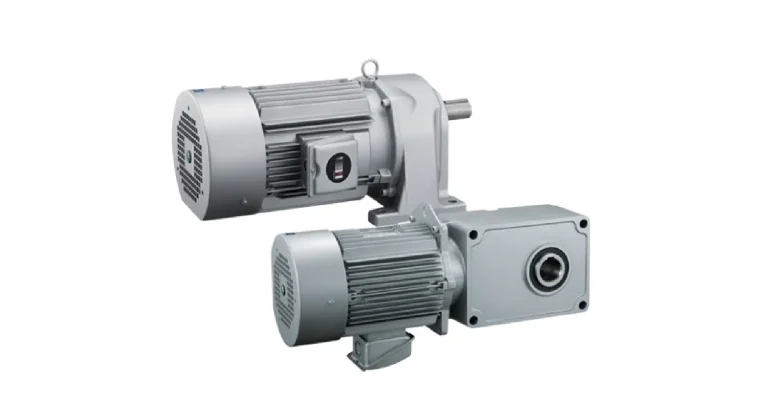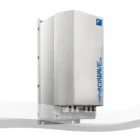Electric motors are everywhere. These devices are essential to modern life, from the hum of your refrigerator to the power behind industrial machinery. In the Philippines, electric motors drive various industries, including manufacturing, transportation, and renewable energy. As the demand for energy-efficient and high-performance systems grows, understanding the different types of electric motors, including an AC/DC motor, becomes increasingly important.
What are AC Motors?
Alternating Current (AC) is a type of electrical current that periodically reverses direction, unlike Direct Current (DC), which flows in one direction. AC motors are electric motors powered by alternating current. They are known for their simplicity, reliability, and efficiency, making them a popular choice for many applications.
Working Principle
AC motors operate using electromagnetic induction. When AC voltage is applied to the stator windings, it creates a rotating magnetic field. This magnetic field, in turn, induces a current in the rotor, which generates its own magnetic field. The interaction between these magnetic fields produces torque, causing the rotor to rotate.
Types of AC Motors
-
- Induction Motors: These are the most common type of AC motor. Induction motors rely on a small difference in speed between the stator’s rotating magnetic field and the rotor shaft speed (called slip) to induce rotor current in the rotor AC winding.
-
- Squirrel Cage Motors: These motors have a simple and rugged design, making them reliable and low-cost. They are commonly used in applications such as pumps, fans, and blowers.
-
- Wound Rotor Motors: These motors have a wound rotor with slip rings, allowing external resistance to be added to the rotor circuit. This provides high starting torque and adjustable speed control, making them suitable for heavy-duty applications like cranes and compressors.
-
- Synchronous Motors: Unlike induction motors, synchronous motors operate at a constant speed, synchronized with the frequency of the AC power supply. They are often used in applications requiring precise speed control, such as timing devices and industrial machinery.
Common Applications in the Philippines
AC induction motors are widely used in the Philippines in various applications.
-
- Pumps
-
- Compressors
-
- Fans and Blowers
-
- Lathe Machines
-
- Plastic & Textile Machineries
-
- Cement Plants
-
- Flour Mills and Paper Mills
What are DC Motors?
Direct Current (DC) is electrical current that flows in one direction. DC motors convert this electrical energy into mechanical energy through a magnetic field generated by the direct current. They are known for their precise speed control, making them crucial in many industrial applications.
Working Principle
A DC motor operates on the principle that when a current-carrying conductor is placed within a magnetic field, it generates mechanical force. When DC current energizes the motor, it creates a magnetic field in the stator, which interacts with magnets on the rotor, causing rotation. The commutator reverses the current to keep the rotor spinning continuously. The direction of force is defined by Fleming’s left-hand rule, and its magnitude is given by F = BIL (where B = magnetic flux density, I = current, and L = length of the conductor within the magnetic field).
Types of DC Motors
-
- Brushed DC Motors: Brushed DC motors utilize brushes to deliver current to the motor windings.
-
- Series Wound Motors: In series wound motors, the field winding connects in series with the armature. The speed varies automatically with the load, increasing as the load decreases. These are typically used when heavy power demand is necessary.
-
- Shunt Wound Motors: Shunt wound motors feature a field winding connected in parallel with the armature. A brushed shunt wound motor will run at a constant speed regardless of the load.
-
- Compound Wound Motors: These motors combine the characteristics of both shunt and series wound motors. They provide efficient speed regulation and high starting torque, typically for applications requiring both.
-
- Brushless DC Motors (BLDC): BLDC motors use electronics instead of brushes for commutation, offering several advantages. They have a high torque-to-weight ratio and more torque per watt, which increases efficiency. BLDC motors also have increased reliability, reduced noise, and a longer lifetime because there is no brush or commutator erosion. Due to the absence of brushes, BLDC motors minimize maintenance requirements and experience fewer breakdowns, leading to cost savings.
Common Applications in the Philippines
DC motors find applications in:
-
- Robotics
-
- Electric vehicles
-
- Some industrial drives
-
- Cranes
-
- Conveyors
-
- Pumps
-
- Fans
AC vs. DC Motors: A Comparison
| Feature | AC Motor | DC Motor |
| Power Source | Alternating Current (AC) | Direct Current (DC) |
| Brushes | Typically no | Yes (in brushed types) |
| Design Complexity | Simpler | More complex |
| Efficiency | Generally higher | Lower (especially for larger motors) |
| Cost | Generally lower | Generally higher |
| Speed Control | More complex (often requires variable frequency drives) | Simpler (usually voltage control) |
| Starting Torque | Generally lower | High |
Application Suitability
AC Motors: Choose AC motors for applications requiring constant speed and high efficiency, such as fans, pumps, and some industrial machinery. They are also suitable where low startup power demands are needed.
DC Motors: DC motors are ideal for applications needing precise speed control and high starting torque, like robotics, electric vehicles, and certain industrial equipment. Brushless DC motors are increasingly favored where longevity, efficiency, and reduced maintenance are critical.
Pro Tip: Selecting a motor that is appropriately sized for your application is vital. An undersized motor may overheat and fail, while an oversized motor can lead to inefficiencies and increased operational costs.
Key Considerations for Motor Selection
Choosing the right motor can significantly impact your system’s performance, efficiency, and lifespan. Here’s a checklist to guide you in selecting the optimal AC or DC motor for your specific application:
Power Requirements (Horsepower/Kilowatts)
Determine the necessary power to handle your load efficiently. Consider both the continuous power needed and any peak power demands during startup or operation.
Speed Control Requirements
Evaluate whether your application requires variable speed or constant speed. AC drives offer sophisticated speed control for processes requiring precise variations. DC drives provide a more straightforward control mechanism, which makes them suitable for consistent speed across various requirements.
Torque Characteristics
Analyze the torque needed to start and run your load. DC motors generally offer higher starting torque, suiting applications requiring rapid acceleration. AC motors can generate higher torque using a more powerful current.
Duty Cycle
Consider whether the motor will operate continuously or intermittently. AC motors are efficient for intermittent use, providing reliable torque for on-demand starting and stopping.
Environmental Conditions
Assess the operating environment, including temperature, humidity, and dust levels. Motors operating in harsh environments may need reinforced, waterproof, or dirt-resistant casings.
Efficiency
Look at motors with high-efficiency ratings to reduce energy consumption and operating costs. AC drives excel in energy efficiency and are beneficial under variable load conditions.
Cost
Evaluate the initial purchase price, operating costs, and maintenance expenses. While DC drives might have lower initial costs, AC drives can be more economical in the long run due to lower maintenance and energy usage.
Availability of Local Support and Service
Ensure that you have access to local support and service for maintenance and repairs. Reputable suppliers like Fuji Electric offer comprehensive support to keep your operations running smoothly.
Motor Maintenance and Best Practices
Regular maintenance is crucial for both AC and DC motors to ensure optimal performance and longevity. Neglecting maintenance can lead to unexpected failures, increased downtime, and costly repairs. Here’s why maintenance matters and some best practices to follow:
Importance of Regular Maintenance
-
- Preventive Care: Regular maintenance helps identify potential issues before they escalate into significant problems. This proactive approach minimizes unexpected breakdowns and extends motor life.
-
- Efficiency: Well-maintained motors operate more efficiently, reducing energy consumption and operational costs.
-
- Safety: Regular inspections can prevent hazardous situations caused by motor failures, ensuring a safer working environment.
General Tips for Maintenance
-
- Lubrication: Proper lubrication reduces friction and wear. Follow manufacturer guidelines regarding the type of lubricant, quantity, and frequency. Avoid over-lubrication, as it can be just as harmful as under-lubrication.
-
- Inspection: Conduct routine inspections for signs of wear, overheating, unusual noises, or vibrations. Check for loose connections, oil leaks, and dirt accumulation.
-
- Cleaning: Keep motors clean from dust, dirt, and debris. Accumulation can lead to overheating and insulation failure. Regularly blow out dirt from the motor and wipe commutators and brushes.
-
- Monitoring: Pay attention to operating temperatures and vibrations. Use temperature sensors or vibration analysis tools to monitor motor health continuously.
-
- Professional Help: For complex repairs or maintenance tasks beyond routine checks, consult with qualified professionals. They can provide expertise in diagnosing issues and performing necessary repairs safely.
Emerging Trends in Motor Technology
The landscape of motor technology is evolving rapidly, driven by advancements aimed at improving efficiency, integration, and automation. Here are some key trends shaping the future of AC/DC motors:
Increased Efficiency
Permanent magnet motors are gaining popularity due to their high efficiency compared to traditional motors. These motors reduce energy consumption significantly while providing high torque at lower speeds.
Smart Motors and Motor Drives
The integration of intelligence into motors is transforming how they operate. Smart motors can monitor their performance in real-time, providing valuable data that helps optimize operations and predict maintenance needs. This capability enhances productivity by reducing downtime through proactive maintenance strategies.
Integration with Automation Systems
As industries embrace Industry 4.0 practices, the integration of motors with automation systems becomes essential. Motors equipped with smart controls can seamlessly connect with existing control systems, allowing for enhanced data-driven decision-making and improved operational efficiency.
Pro-Tip: Keep up with emerging trends in motor technology, such as smart motors and energy-efficient designs. Adopting new technologies can enhance your operations and reduce energy consumption significantly.
FAQs
What is the role of a Variable Frequency Drive (VFD) in AC motor systems?
A Variable Frequency Drive (VFD) controls the speed of an AC motor by varying the frequency and voltage supplied to the motor. This allows for precise speed control, energy savings, and soft starting capabilities, which reduce mechanical stress on connected equipment.
How do motor efficiency standards (like IE3, IE4, etc.) impact my motor selection?
Motor efficiency standards, such as those defined by the International Electrotechnical Commission (IEC), classify motors based on their energy efficiency. Selecting a motor that meets higher efficiency standards (e.g., IE3 or IE4) reduces energy consumption, lowers operating costs, and can contribute to sustainability goals. However, consider the initial cost versus the long-term savings.
What are the common causes of motor failure, and how can I prevent them?
Common causes include overheating, overload, voltage imbalances, contamination (dirt, moisture), and bearing failure. Preventive measures include proper ventilation, overload protection, regular inspections, maintaining a clean environment, and following recommended lubrication schedules.
Can AC and DC motors be used interchangeably?
No, AC and DC motors cannot be used interchangeably without significant modifications. They require different power sources and control systems. While it is possible to convert AC power to DC power (or vice versa) and then use the appropriate motor, selecting the correct motor type for the available power supply is generally more efficient and cost-effective.
How do I troubleshoot a motor that’s not starting or running properly?
Troubleshooting steps include checking the power supply, verifying the motor’s overload protection, inspecting wiring connections, testing the motor’s windings for continuity and shorts, and looking for mechanical obstructions. If you are unsure about the cause or how to proceed, consult a qualified electrician or motor repair specialist.
About Fuji Electric Sales Philippines, Inc.
As part of the global Fuji Electric network, Fuji Electric Sales Philippines, Inc. delivers technology and support to businesses across the country. The team focuses on selling, promoting, and supporting products in power electronics, automation, and energy efficiency.
Need help choosing the right AC/DC motor? For expert advice, contact:
Rickson Manalo
Assistant Sales Manager
0917-115 6102









